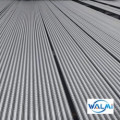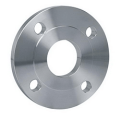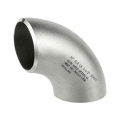Heat Exchanger Tubes—Corrugated Tubes: A Revolutionary Force in Heat Exchange
In today’s world of energy scarcity and increasing demands for industrial efficiency, heat exchangers, as core equipment for heat exchange, have a significant impact on the overall system’s operating efficiency and cost. Among the many types of heat exchanger tubes, corrugated tubes, with their unique advantages, have become a true revolutionary force in the heat exchange field.
Enhanced Heat Transfer, Leaping Efficiency
The greatest strength of corrugated tubes lies in their exceptional heat transfer enhancement capabilities. Their surface features periodic corrugations, a unique structure that disrupts the laminar flow of the fluid within the tube and fosters intense turbulence. This increased turbulence promotes more efficient heat exchange within the fluid, continuously renewing the thermal boundary layer and significantly improving the convective heat transfer coefficient. Simply put, under the same flow rate and temperature gradient, corrugated tubes can achieve significantly higher heat transfer rates than traditional smooth tubes. This is crucial for industrial processes requiring extremely high heat transfer efficiency, such as heat control in chemical reactions and waste heat recovery in the power industry, significantly improving energy efficiency and reducing energy consumption.
Compensation Capability Reduces Stress
During actual heat exchanger operation, thermal expansion and contraction are inevitable due to temperature fluctuations in the piping. Traditional smooth pipes are susceptible to significant thermal stress due to this thermal expansion and contraction, leading to pipe deformation, leakage, and even damage. Corrugated pipes, on the other hand, offer excellent flexibility and can compensate for temperature-induced displacement through elastic deformation. This compensation capability effectively reduces thermal stress in the piping system, protecting the overall structure of the pipes and heat exchanger, extending the equipment’s service life, and reducing maintenance and replacement costs.
Preventing and Removing Scale to Maintain Performance
During long-term operation, scale accumulation is a common and challenging problem in heat exchangers. Scale adheres to the inner walls of the pipes, increasing thermal resistance and reducing heat transfer efficiency. The corrugated structure of bellows creates complex vortices and turbulence during fluid flow. These flow characteristics make it difficult for scale to settle firmly on the pipe walls. Furthermore, when cleaning is necessary, the elastic deformation of bellows facilitates scale removal, ensuring long-term, efficient operation of the heat exchanger more effectively than with traditional smooth pipes.
Diverse Materials, Strong Adaptability
To meet the needs of diverse operating conditions, bellows can be manufactured from a variety of materials, with stainless steel being the most common. Stainless steel offers excellent corrosion resistance, making it suitable for heat transfer with a variety of corrosive fluids, such as acidic and alkaline media in the chemical industry. Additionally, depending on the specific operating environment, bellows can be made from other materials, such as copper alloys and titanium alloys, to ensure reliable operation under extreme conditions such as high temperature, high pressure, and severe corrosion. This diverse material range has led to widespread application of bellows in various industries, including the petroleum, chemical, pharmaceutical, and food industries.
As an innovative form of heat exchanger tubing, bellows offer novel solutions for heat exchange, offering advantages such as enhanced heat transfer, thermal stress compensation, scale prevention and removal, and a wide variety of materials. They not only improve heat transfer efficiency and reduce energy consumption, but also enhance equipment reliability and stability. With continuous technological advancements and accumulated application experience, we believe that bellows will play an even more important role in the future of heat exchange, driving industrial production towards greater efficiency, energy conservation, and environmental protection.




